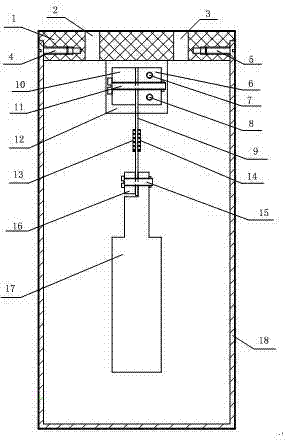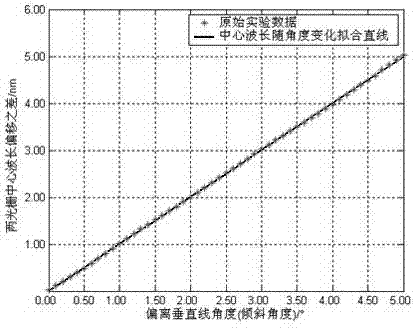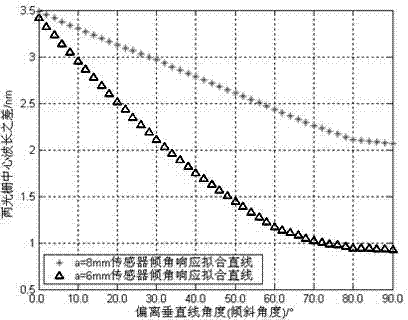Tilt angle sensor based on optical fiber Bragg gratings and method for measuring tilt angle of tilt angle sensor
An optical fiber Bragg and inclination sensor technology, which is used in measuring devices, measuring inclinations, instruments, etc., can solve the problems of continuity, real-time performance and measurement sensitivity that cannot meet monitoring requirements, cannot expand the range of detection, and limit the practical application of sensors. , to achieve the effect of improving design flexibility, small residual strain, and easy replacement
- Summary
- Abstract
- Description
- Claims
- Application Information
AI Technical Summary
Problems solved by technology
Method used
Image
Examples
Embodiment 1
[0056] The thin-walled equal-section metal beam 9 is made of beryllium bronze with good elasticity and toughness, and its modulus of elasticity is E=131GPa. The upper end of the beryllium bronze is fixed on the fixed bottom plate by the fixed briquetting block 6 and the first movable briquetting block 10 On 12, the lower end of the thin-walled equal-section metal beam 9 is closely connected with the mass block 17 through the second movable pressing block 16 and the sixth screw 15. The length of the beryllium bronze is L=52mm, the width is a=6mm, and the thickness is b= 1.5mm, mass block 17 adopts cylindrical brass with high density, and its mass m=0.1kg. When the structure deviates from the vertical plane to produce an inclination angle, the external force load produced by the mass block 17 makes the strain at the lower end L2=9mm of the thin-walled equal-section metal beam 9 change, and then the optical fiber Bragg grating stuck there Stretching causes the center wavelength t...
Embodiment 2
[0064] Similar to Embodiment 1, the difference is that the width of the thin-walled equal-section metal beam becomes b=8mm, and the sensor inclination response curve obtained from the experiment is as follows Figure four shown by Figure four It can be seen that after increasing the width of the thin-walled equal-section metal beam, the sensor has a linear range of 0-80°, that is, increasing the width of the thin-walled equal-section metal beam reduces the sensitivity of the sensor and expands the inclination detection of the sensor range, so that it can be effectively applied to the application requirements of different engineering environments.
PUM
 Login to View More
Login to View More Abstract
Description
Claims
Application Information
 Login to View More
Login to View More - R&D
- Intellectual Property
- Life Sciences
- Materials
- Tech Scout
- Unparalleled Data Quality
- Higher Quality Content
- 60% Fewer Hallucinations
Browse by: Latest US Patents, China's latest patents, Technical Efficacy Thesaurus, Application Domain, Technology Topic, Popular Technical Reports.
© 2025 PatSnap. All rights reserved.Legal|Privacy policy|Modern Slavery Act Transparency Statement|Sitemap|About US| Contact US: help@patsnap.com



